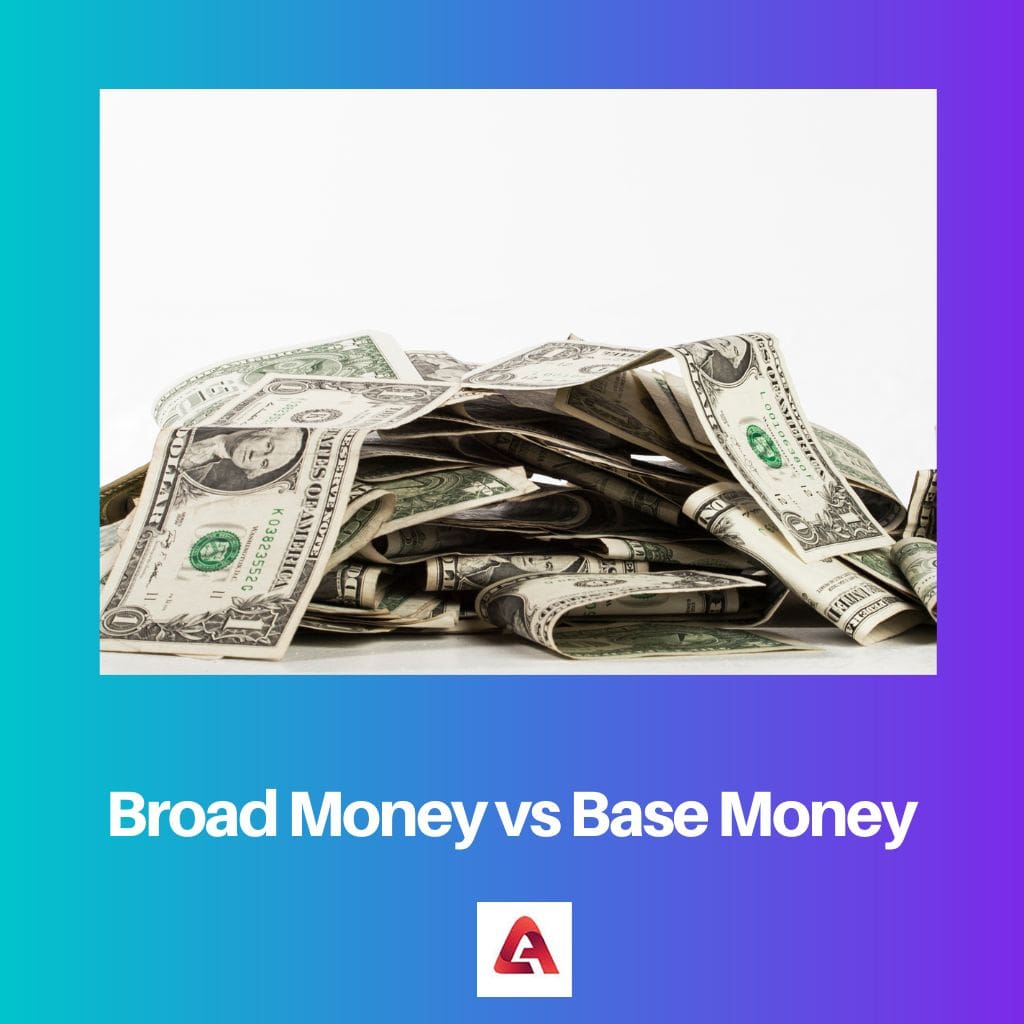Money is extremely important in the economy. And we’re all going about trying to get money and make a livelihood. While each country’s concept of money differs, each country has a measure for broad money and narrow money. This article will explain the distinction between wide money and base money.
Key Takeaways
- Broad money includes all forms of money in an economy, such as currency, checking, and savings accounts.
- Base money, also known as high-powered money, consists of currency in circulation and banks’ reserves held at the central bank.
- Broad and base money are essential components of a country’s money supply and shape monetary policy.

Broad Money vs Base Money
Broad money refers to the amount of money in an economy in physical form or liquid from readily available to be spent or for transactions by businesses. Base money is the monetary base present in the accounts of public banks and commercial banks, which is the basic source of lending and creating further money.
Comparison Table
| Parameter of Comparison | Broad money | Base money |
|---|---|---|
| Use | USED TO SPOT INFLATION | MEASURES THE AMOUNT OF CASH WHICH CIRCULATES THE ECONOMY |
| Abbreviation | M-4 | M-0 |
| Definition | INCLUDES MEASURE OF A NATION’S MONEY | INCLUDES MEASURE OF A NATION’S MONEY |
| Forms | BROADEST FORMS OF THE MONEY SUPPLY | NARROWEST FORMS OF MONEY SUPPLIES |
| Function | Circulation and reserve balances | Currencies and deposits |
What is Broad Money?
Broad money is the most comprehensive measure of a country’s money supply. It comprises restricted money and other assets that can be quickly converted to cash. Because wide money is the most flexible technique of assessing an economy’s money supply, central banks are intent on monitoring it in order to anticipate inflation.
Money is constantly in circulation. As a result, economists find it difficult to estimate the amount of money in circulation using cash. And now comes the big money. Because it is the most general definition of money, it includes both narrow money and less liquid assets such as foreign currencies, certificates of deposit, treasury bills, and other goods that can be quickly changed to cash.
Broad money is a financial accumulation consisting of deposits with terms of between one and two years and deposits redeemed with up to three months’ notice. This category also includes repurchase agreements, shares or units of money market funds, and debt instruments with maturities of up to two years. Simply explained, broad money is an indicator of the monetary supply.
It is known as M2 (or M3) and has the ability to absorb both spending and income shocks. As a result, it also fulfils the cautious demand motivation. Furthermore, because of its expanding relevance in the allocation of wealth, it serves as a store of value.
What is Base Money?
The terminology base money refers to territorial money that serves as a currency’s monetary base. The entire currencies and coins in circulation and sight deposits maintained at central banks on behalf of commercial banks constitute base money.
Unlike book money, such as bank account balances, and quasi money, such as vouchers and coupons, base money is a legal currency for the payment of government debts. All persons in Switzerland are legally compelled to accept base money in the form of Swiss franc banknotes and coins for debt settlement.
Base money, known as the monetary base, is the total quantity of cash in circulation. The quantity of money in circulation and bank reserves are included in base money, abbreviated as M0. Base money is rarely utilized since it incorporates different types of non-currency money accessible in the current economy. Base money is rarely utilized since it incorporates different types of non-currency money accessible in the current economy.
Base money is an important component of a country’s money supply since it measures the quantity of cash in circulation. Monetary authorities, or central banks, produce and distribute it. The central bank can raise the quantity of base money in circulation to induce inflation. They can also diminish the base currency in circulation to induce deflation.
Main Differences Between Broad Money and Base Money
- Base money is made up of cash in circulation, whereas broad money, or M3, is made up of relatively liquid liabilities kept by domestic MFIs by the money-holding community.
- Economists use broad money to identify prospective inflation tendencies, whereas base money is used to calculate the quantity of currency in circulation in a given country.
- M4 is an abbreviation for broad money. Base money is abbreviated as M0.
- Broad money is the most significant indicator of a country’s money supply, combining narrow money and other properties. The whole quantity of currency in circulation, including the quantity of money, is referred to as base money.
- The amount of currency in circulation and reserve balances is referred to as base money, whereas broad money covers currencies and deposits with durations of a maximum of two years.
- https://www.sciencedirect.com/science/article/pii/S0922142503000379
- https://www.elgaronline.com/downloadpdf/1840646144.pdf#page=74
